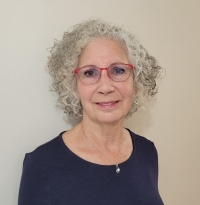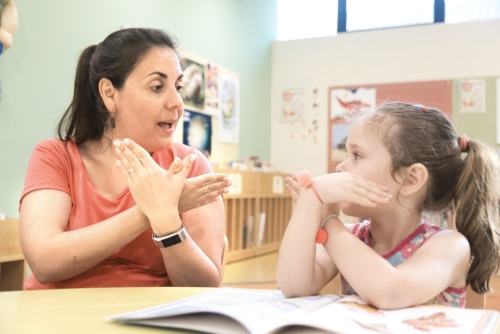Thoughts on Content Accessibility, by Corinne K. Vinopol, Ph.D.

Accessibility to information for people who are deaf, hard of hearing, and deaf-blind (D/HoH/DB) is a right that cannot be overlooked in terms of population incidence, legal mandates, and basic human consideration.
In the United States alone, there are over 48 million people who are deaf or hard of hearing (D/HoH) (Centers for Disease Control and Prevention, 2007). According to the National Institute on Deafness and Communication Disorders (NIDCD), approximately 15% of American adults (37.5 million) aged 18 and over report some trouble hearing. Among adults aged 20-69, the overall annual prevalence of hearing loss reported during the 2011-2012 period was 14% (27.7 million). The National Association of Regulatory Utility Commissions (NARUC) estimated in 2009 that 70,000-100,000 people are deaf-blind (DB).
Section 504 of the 1973 Rehabilitation Act, the first disability civil rights law to be enacted in the US, prohibits discrimination against people with disabilities in programs that receive federal financial assistance and set the stage for enactment of the Americans with Disabilities Act (ADA). On July 25, 1990, President George Bush signed the ADA, which requires that disabled individuals have equal access to communication provided to nondisabled persons in almost all businesses and services. Among those most specifically affected are D/HoH/DB people. Despite these imperatives, deficits in access to businesses, information, and services persist, having an ongoing impact on this population.
The greatest challenge facing D/HoH/DB individuals within society is communication. Research and anecdotal information from as far back as records can be found attest to this fact (Moores, 2010). The impact of hearing loss on educational achievement, literacy, access to information and services, and upward mobility has been incessantly bemoaned and investigated.
ASL is a visual/gestural language that is distinct from English, having its own grammar, syntax, vocabulary, etc. and has no text representation. Many deaf people who rely on sign language for communication do not have good facility with English, which is both spoken (an avenue to which they have no access) and written. Because English is an auditory mediated language that depends upon phonological code, reading achievement scores of deaf children usually fall far short of those found among hearing children of comparable abilities (Luckner, Sebald, Cooney, Young III, & Muir, 2005). On average, deaf high school graduates have a fourth-grade reading level; only 7-10% of deaf students read beyond a seventh to eighth-grade reading level; and approximately 20% of deaf students leave school with a second-grade or below reading level. (Gallaudet University’s national achievement testing programs (1974, 1983, 1990, and 1996); Durnford, 2001; Braden, 1992; King & Quigley, 1985; Luckner, Sebald, Cooney, Young III, & Muir, 2006; Strong, & Prinz, 1997).

A particularly interesting aspect of the low reading skill levels displayed by deaf students is that while they may not understand a sentence in print, they may understand it perfectly if it is presented in ASL. Study after study (Singleton, Supalla, Litchfield, & Schley, 1998; Prinz, Kuntz, & Strong, 1997; Ramsey & Padden, 1998) has shown that a bilingual approach (i.e., combining ASL and English) can improve literacy and ensure comprehension.
Although it may seem that individuals who are deaf or hard of hearing could learn English as easily as hearing individuals who have learned English as a second language, this parallel is inaccurate because it does not recognize that a solid language base, developed early in life, is essential to learning a second language. Many deaf people have little language access until ASL is introduced at school age. Further, individuals who are deaf or hard of hearing have not had the same breadth of access as their hearing peers to daily conversation, broadcast media, and other ubiquitous cultural elements that reflect English usage. This limited access to English can then affect their understanding of a host of communication imperatives (e.g., test questions, instructions).
Despite the challenges of learning a spoken language, research has shown that deaf adults report significantly higher levels of reading motivation as compared to their hearing peers. Interestingly, despite this higher motivation, no significant difference exists in the amount of reading actually done. Amount of reading for personal reasons was found to be the best predictor of text comprehension in deaf research participants, and intrinsic motivation was found to be the best predictor of amount of reading (Parault & Williams, 2009). This clearly indicates that when self-motivated (e.g., for leisure or personal growth), deaf adults read more, and the more they read, the better their comprehension. Consequently, having captioning of motivating video content is essential to improving literacy among D/HoH/DB individuals.
The work being funded by the US Department of Education to enrich accessibility to video content is a vital service to a significant segment of the general population, not only because it helps fulfil a legal obligation to which D/HoH/DB people are entitled, but more importantly because it engenders improved literacy and contributes to personal fulfilment.
About the author:
Dr. Corinne Vinopol is President and CEO of the Institute for Disabilities Research and Training, Inc. She has directed R&D assistive technology projects for a number of government agencies including NIDLRR, NSF, IES, NASA, USAID, and NOAA, as well as private entities including Wal-Mart and AT&T, and received awards for her work at the White House and UN. Dr. Vinopol is part of Dicapta's Advisory Group for the project Enhanced Access to Video for Students with Sensory Disabilities through Emerging Technology- EnhAccess.
References:
Braden, J.P. (1992). Intellectual assessment of deaf and hard-of-hearing people: A quantitative and qualitative research synthesis. School Psychology Review, 21(1), 82–94. https://doi.org/10.1080/02796015.1992.12085597.
Durnford, L. (November, 2001). Linking languages. Radio Netherlands.
Centers for Disease Control and Prevention. (2007). https://www.cdc.gov/ncbddd/hearingloss/data.html.
King, C., & Quigley, S. (1985). Reading and Deafness. College-Hill Press.
Luckner, Sebald, Cooney, Young III, & Muir. (2005). An examination of the evidence-based literacy research in deaf education. American Annals of the Deaf, 150(5):443-56
Moores, D.W. (2010) Educating the Deaf. Houghton Mifflin Company.
Parault, S. & Williams, H. (Spring, 2010). Reading motivation, reading amount, and text comprehension in deaf and hearing adults. The Journal of Deaf Studies and Deaf Education, Volume 15, Issue 2, 120–135. https://doi.org/10.1093/deafed/enp031.
Prinz, P.M., Kuntze, M., & Strong, M. (1997). Variable factors in the relationship between American Sign Language (ASL) proficiency and English literacy acquisition in deaf children.
Qi, S., & Mitchell, R. Large-scale academic achievement testing of deaf and hard-of-hearing students: Past, Present, and future. (June, 2011). Journal of Deaf Studies and Deaf Education 17(1):1-18.
Ramsey, C., & Padden, C. (1998). Natives and newcomers: Gaining access to literacy in a classroom for deaf children. AEQ, 29,(1).
Singleton, J., Supalla, S., Litchfield, S., & Schley, S. (1998). From sign to word: Considering modality constraints in ASL/English bilingual education. Topics in Language Disorders, 18 (4).
The National Association of Regulatory Utility Commissions (NARUC). (2009). Resolution to Support Equal Access to Communication Technologies by People with Disabilities in the 21st Century. https://pubs.naruc.org/pub.cfm?id=53981403-2354-D714-5187-6269F9392CD0.
